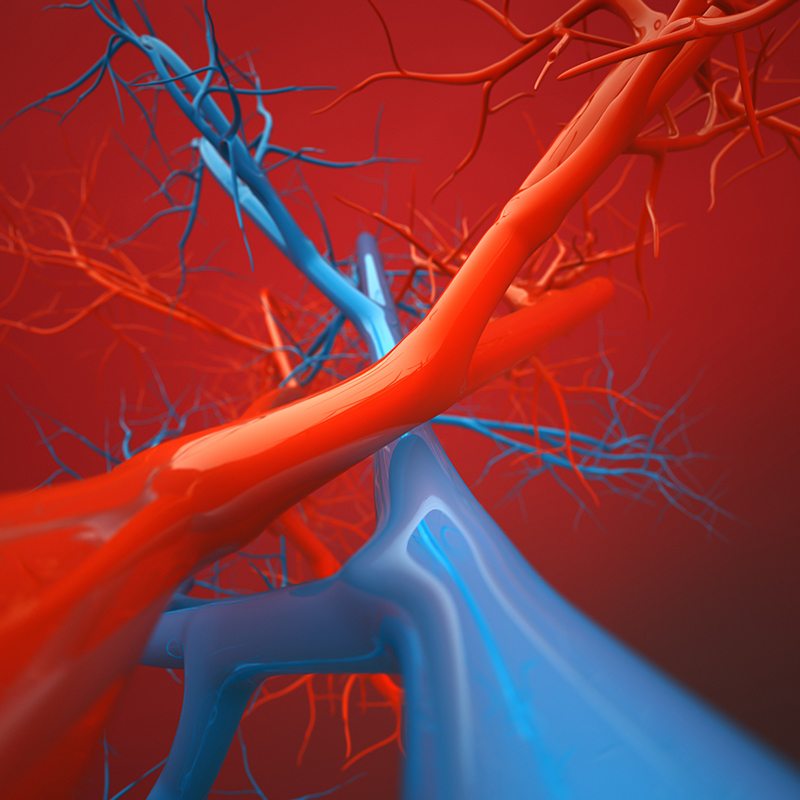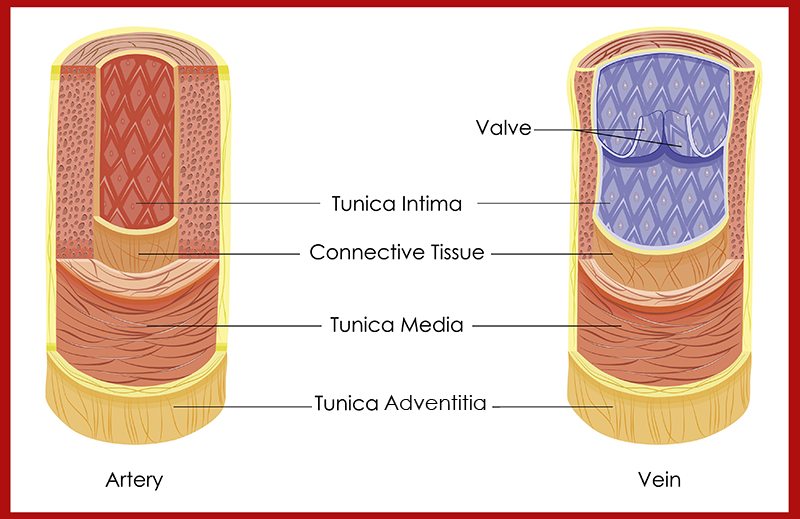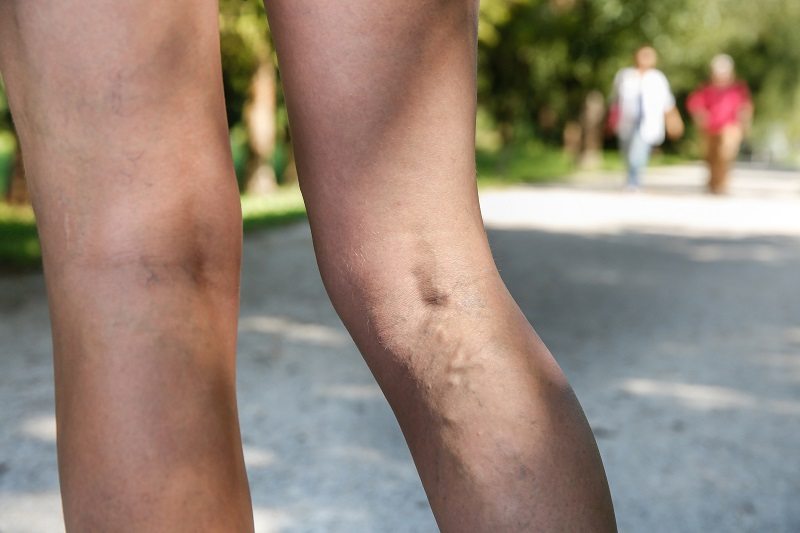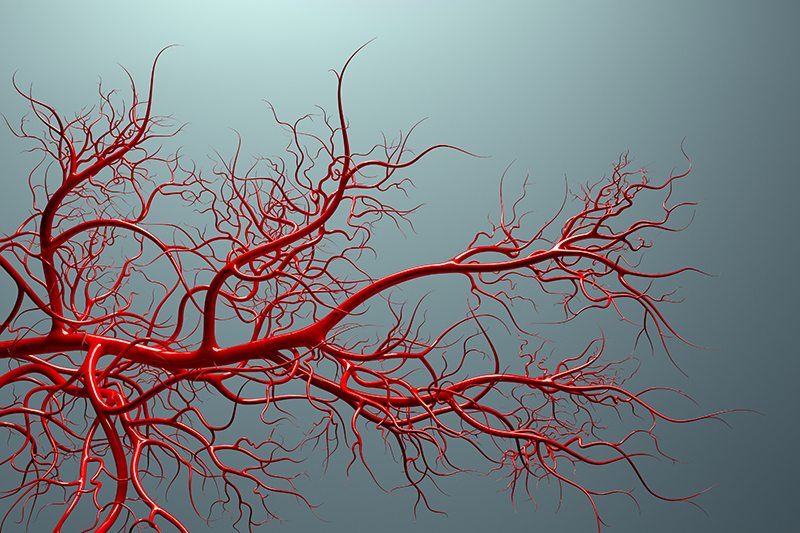Varicose and spider veins are the consequences of deteriorating and clogged veins. These side effects of improper vein care are often discussed, but how they relate to your venous health is typically overlooked. Understanding the makeup of our circulatory system and the anatomy of a vein is an essential part of staying healthy.
Arteries

Arteries carry blood away from the heart, taking the oxygenated blood throughout the body to tissue and organs.
The largest artery in the human body is the aorta which is attached to the left ventricle of the heart muscle.
As oxygenated blood flows through the aorta it begins to move into a network of smaller arteries called arterioles and capillaries.
Veins
Veins are responsible for carrying the de-oxygenated blood back to the heart. This is a vital task to keep your body healthy and functioning. Veins lie closer to the surface of the skin than arteries and can often be seen on various parts of the body that contain a lot of muscle mass such as your arms, legs and chest area.
Veins are constantly working against gravity and therefore have a difficult job to perform. There are little flaps, called valves, to act like gates up and down the veins. The flexing of our muscles keeps blood moving by opening and closing the valves in our veins forcing the de-oxygenated blood to make its way back to the heart.
To fully comprehend the functions of veins and the importance of their care and well-being, it is crucial to understand what veins are made of.
Veins are composed of three main layers:

- The tunica adventitia: The outermost layer of a vein is the tunica adventitia, or adventitia for short. This layer is the thickest layer of a vein’s lining and is made of loose connective tissues and an external elastic membrane. The adventitia fuses with surrounding tissue in the body.
- The tunica media: The tunica media, or media, is the middle layer of a vein’s wall. This layer is built of collagen, elastic fibers, and smooth muscle fibers.
- The tunica intima: The tunica intima, or intima, is the innermost layer of a vein’s lining. This is the thinnest layer of the vein’s wall and is composed of an internal elastic membrane and connective tissue.
The intima also includes endothelium, a layer that is directly exposed to blood flow within the vein. This layer of the vein is first to experience consequences of venous insufficiency.
Vein Weakness and Insufficiency
Many contributors, mostly age, heredity, having children, and standing all day can cause the veins to become a bit weakened. As a result, swelling of the thin walls in veins causes the valves to become farther away from each other and rendered ineffective. The seal or “damming” effect needed for continuous, even blood flow back to the heart, is lost. Pooling of the blood occurs and unsightly, painful and degenerative Varicose Vein Disease begins.

Taking good care of your veins is extremely important for overall health and well-being. When problems occur within a vein, blood may begin pooling and can lead to varicose veins or other serious conditions.
Exercise, a healthy diet, avoiding tobacco products, and limiting intake of sugars, sodium, and saturated fats are all great ways to maintain healthy veins.
The New Jersey Vein and Vascular Center is a state-of-the-art vein center committed to personalized patient care and exceptional vein health. Visit us today to discuss your venous and vascular health!


